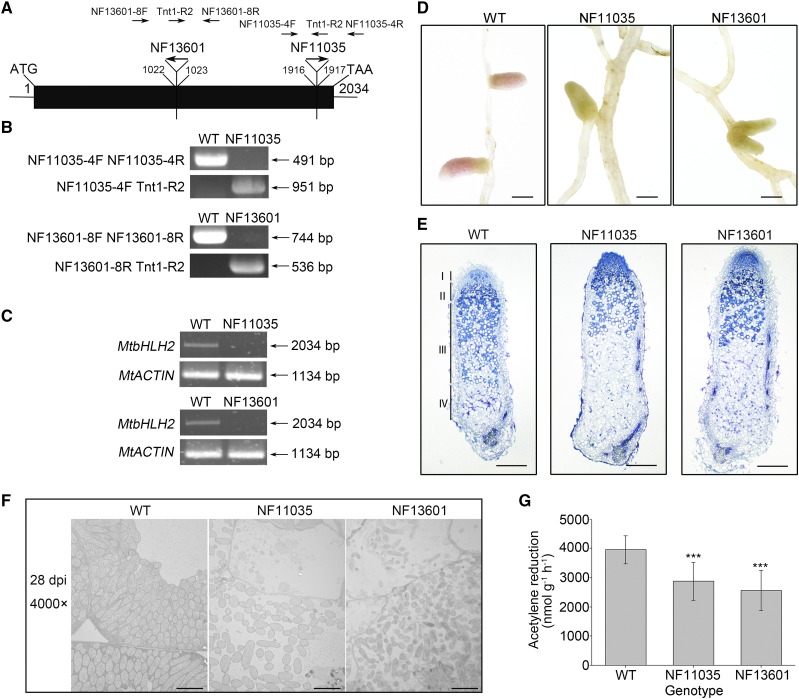Figure 1.
The mutation of MtbHLH2 results in early-nodule senescence and decreased nitrogen fixation. A, Schematic diagram of the Tnt1 insertion site in the MtbHLH2 gene. The box shows the exon, and this gene has no intron. The orientations of Tnt1 are indicated. B, Identification of homozygous lines of Tnt1-insertion mutants (NF11035 and NF13601). The insertion site analysis was performed at the DNA level. C, RT-PCR analysis of MtbHLH2 transcripts in the wild type (WT) and bhlh2 Tnt1-insertion mutants. MtACTIN was used as the loading control. D, Light micrographs of wild-type and bhlh2 Tnt1-insertion mutant nodules at 28 dpi. Bars = 1 mm. E, Longitudinal sections of toluidine blue-stained wild-type and bhlh2 Tnt1-insertion mutant nodules at 28 dpi. The section thickness is 8 μm. The different zones of the nodules (I–IV) are shown. I, Meristematic zone; II, infection zone; III, nitrogen fixation zone; IV, senescence zone. Bars = 200 μm. F, Electron micrographs of longitudinal ultrathin sections of wild-type and bhlh2 Tnt1-insertion mutant nodule cells from the nitrogen fixation zone at 28 dpi (4000× magnification). Bars = 5 μm. G, The nitrogenase activity of wild type and bhlh2 Tnt1-insertion mutant nodules (NF11035 and NF13601) at 28 dpi was determined by an ARA. The error bars represent the ± sd of the means, and asterisks indicate a significant difference between the wild-type and bhlh2 Tnt1-insertion mutant nodules (one-way ANOVA followed by Tukey’s post-hoc test, ***P < 0.001, n = 19). Similar results were obtained from three independent experiments.

